Saving Wisconsin's native bee population is a team effort
Declining populations of the state's native bee species are being tracked through participatory science projects — discovering nests of the endangered rusty patched bumble bee is one success story.
By Steven Potter | Here & Now
September 22, 2023
Native bee populations in Wisconsin and around the world have been declining for decades.
In many cases, bee populations have collapsed due to a number of factors and for some species, their populations have decreased by as much as 90%.
“Climate change, land use changes, habitat loss and pesticides are all playing a role. And each one of those stresses out the bees a little bit. Then when you combine them all together, it’s an awful lot for them to handle at once,” said Elizabeth Braatz, an insect ecologist with the Wisconsin Department of Natural Resources.
Braatz explained this loss of bees is a serious threat to global food systems because of the role they play in pollination. In Wisconsin, native bees help pollinate cranberries, apples and a number of other fruits and vegetables.
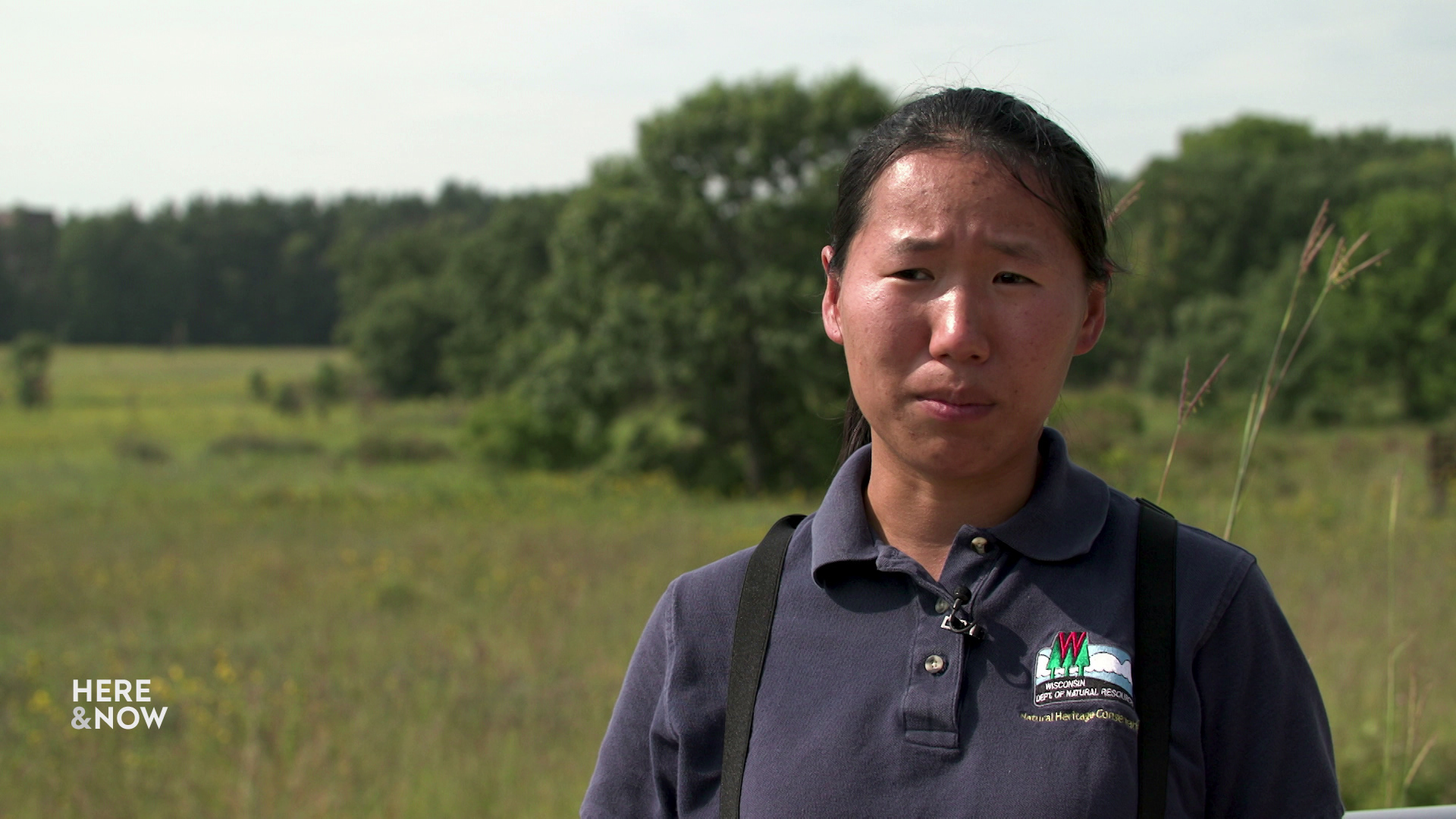
Elizabeth Braatz, an insect ecologist with the Wisconsin Department of Natural Resources, stands in front of a prairie at the UW Arboretum in Madison on Aug. 18, 2023. Braatz lists the series of challenges that bee species in the state face, including pesticides, habitat loss and climate change. (Credit: PBS Wisconsin)
To help scientists, a statewide volunteer group called the Bumble Bee Brigade has been helping track and monitor the state’s native bee populations for years.
“The Bumble Bee Brigade is a participatory science program where anyone who’s got a camera on their cell phone or any other kind of camera can take photographs of bumble bees when they’re in their garden or out on a walk,” said Judy Cardin, a lead volunteer with the Bumble Bee Brigade. “Then, they submit those photos to the Wisconsin DNR website. That information is invaluable and it gets used by researchers.”
Beginning in 2018, this effort now covers most of the state with hundreds of volunteers who catalog the number of bees spotted, their type and location.
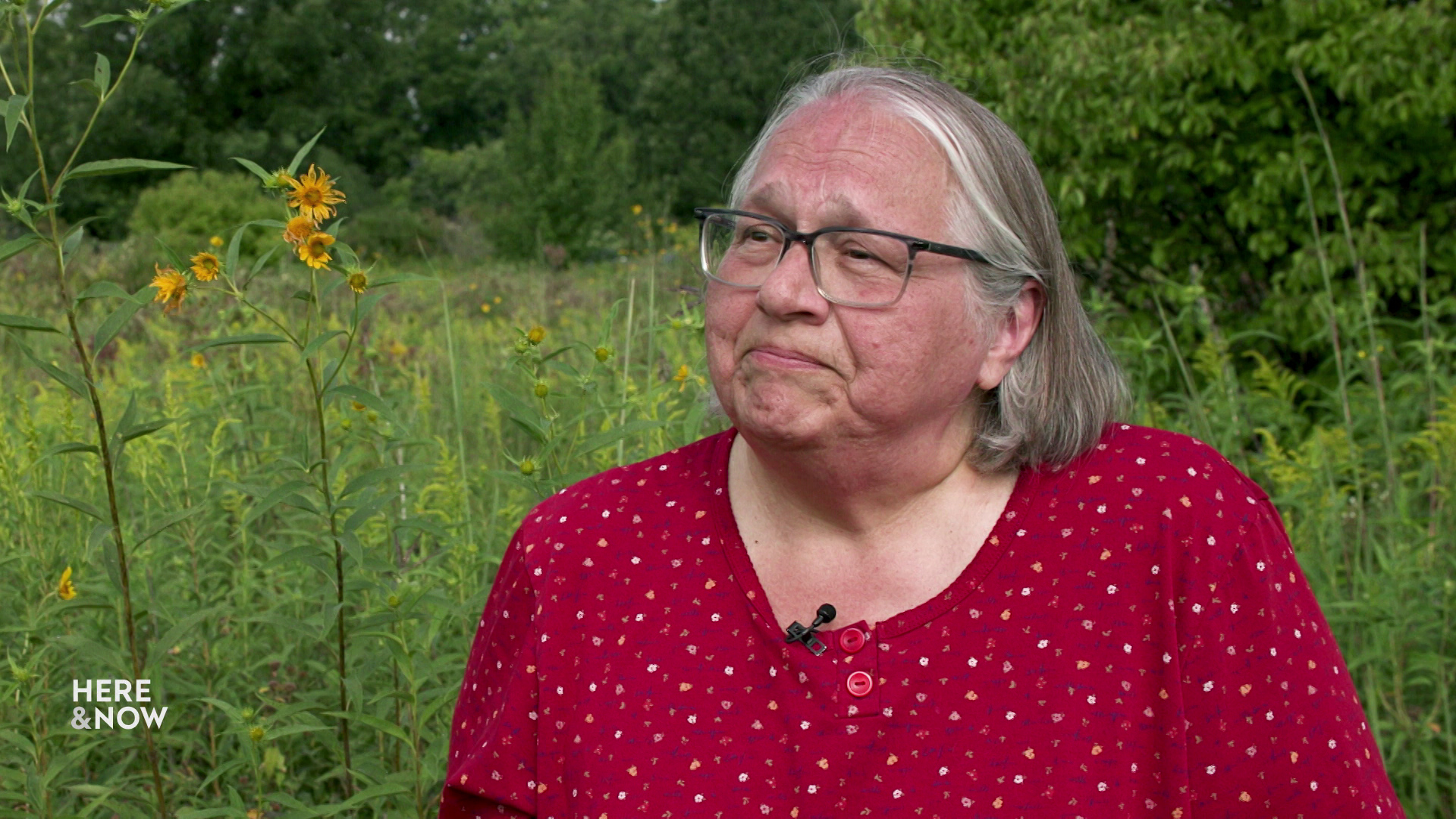
Judy Cardin, a lead volunteer with the Bumble Bee Brigade, stands next to a prairie area at the UW Arboretum in Madison on Aug. 18, 2023. The Bumble Bee Brigade is a participatory science group that captures and submits photos of bees to the Wisconsin Department of Natural Resources to help track the distribution of these pollinators around the state. (Credit: PBS Wisconsin)
Despite the summer drought, the latest numbers are promising.
Over the last five years, the different types of bumble bees found has increased and the frequency of sightings has more than tripled.
“Fingers crossed for bees for the rest of the season,” Braatz said in late August. “We’re still seeing larger and larger numbers of them and I think that there’s hope for Wisconsin.”
- A bee collects pollen from a flower on Aug. 18, 2023 at the UW Arboretum in Madison. (Credit: PBS Wisconsin)
- A bee collects pollen from a flower on Aug. 18, 2023 at the UW Arboretum in Madison. (Credit: PBS Wisconsin)
There are about 20 species of native bumble bees in Wisconsin but there’s one in particular that volunteers with the Bumble Bee Brigade are always looking for: the rusty patched bumble bee, also known as Bombus affinis.
“We have rusty patched bumble bees here, and the population of rusty patched bumble bees has decreased by 90% in the last 20 years,” explained Cardin. “Wisconsin is, I think, their last best hope for survival.”
The rusty patched bumble bee was the first bee put on the federal endangered species list back in 2017, and is regarded as a good barometer for overall bumble bee health in the state.
“Wisconsin is a stronghold left for the population so we can find them across the southern half of the state,” said Jay Watson, a conservation biologist with the DNR. “But across their entire range from Maine to the Dakotas down to Ohio and Indiana – they’ve disappeared from most of those areas.”
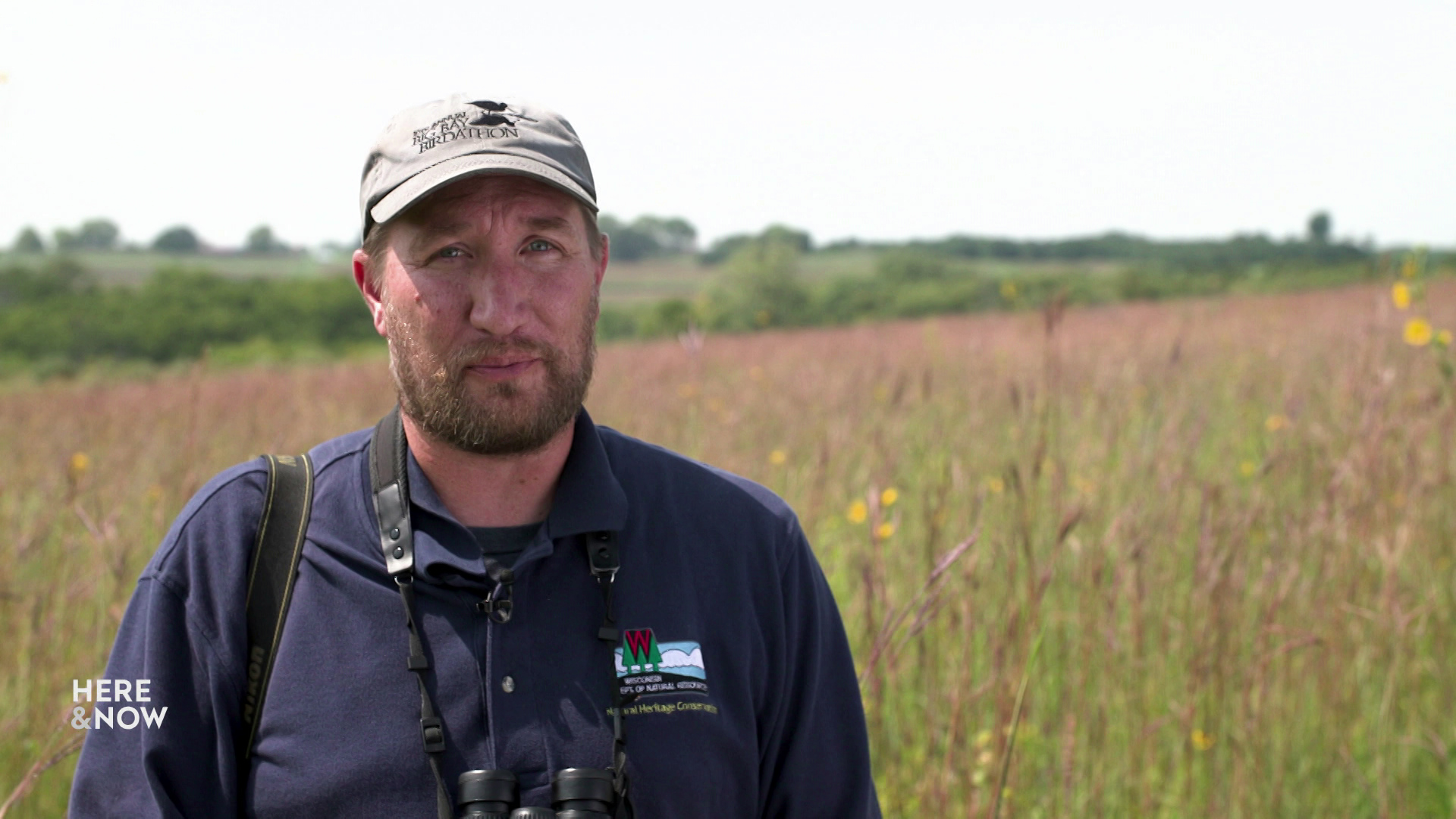
Wisconsin Department of Natural Resources conservation biologist stands in a prairie area at Governor Dodge State Park in Dodgeville on Aug. 18, 2023. Watson explains how the rusty patched bumble bee can still be found in southern Wisconsin as the species declines around the Midwest. (Credit: PBS Wisconsin)
In August, three brand new nests for the rusty patched bumble bee were discovered here.
Two rusty patched bumble bee nests were discovered in southeast Wisconsin. A third nest was found on a large plot of land in Calumet County owned by AriensCo, which manufactures snow blowers and lawn mowers. Including those three, there have been only seven rusty patched bumble bee nests found in Wisconsin in the last 20 years.
AriensCo is working to turn more than 200 acres into what they’re calling a “pollinator prairie.”
“We have a butterfly project and a bumble bee project that are both mainly built on the prairie oak savanna,” explained Rachel Padour, an AriensCo conservation intern.
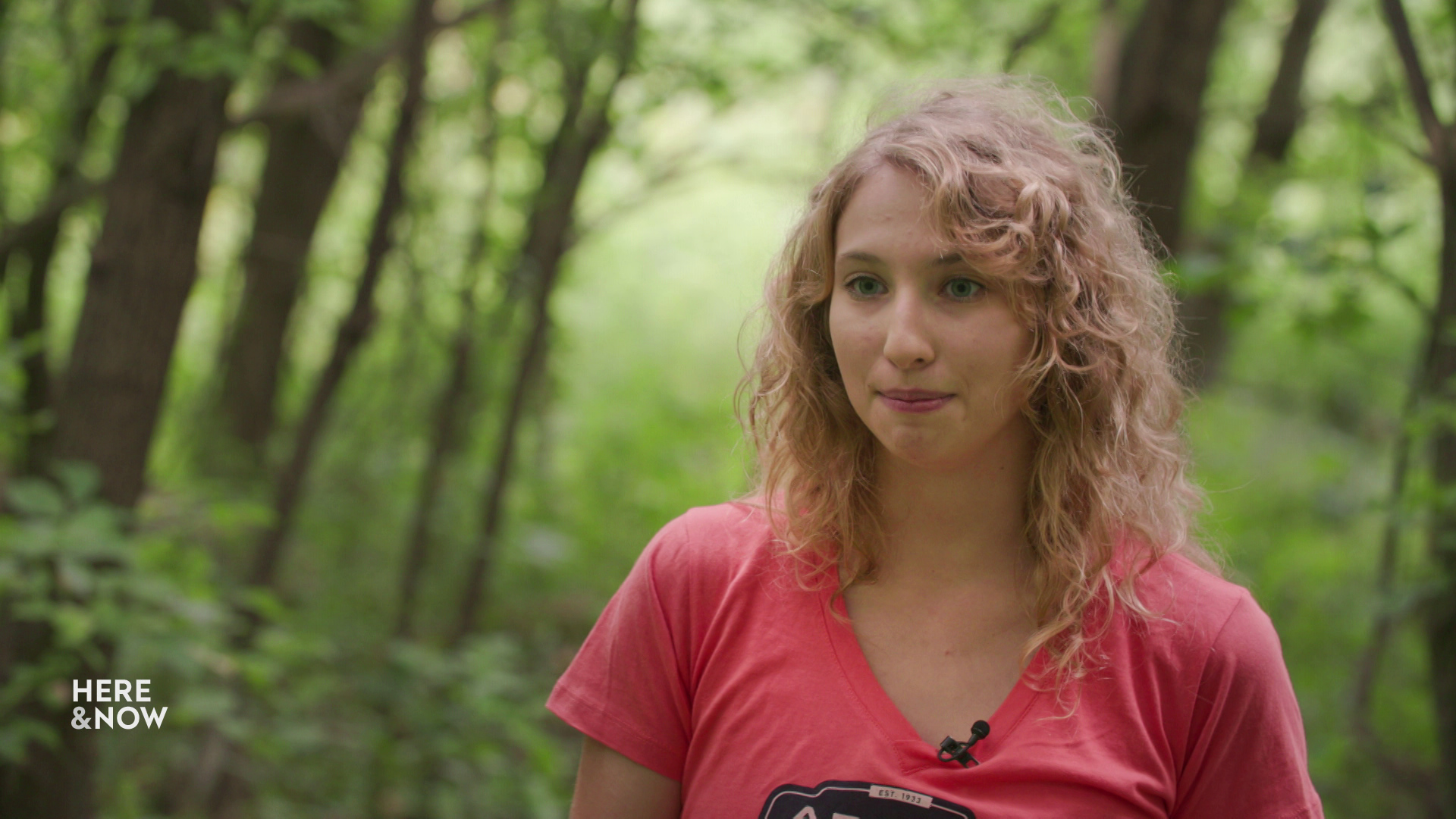
Rachel Padour, a conservation intern with AriensCo, gives a tour on Aug. 25, 2023 of the company’s grounds in Brillion, where the manufacturer is establishing a “pollinator prairie.” This project is intended to help sustain habitat for bumble bees and other pollinators. (Credit: PBS Wisconsin)
“We’re providing over 140 species of native plants,” Padour explained. “We’re providing not only forage from April to October in the form of flowering resources, but we’re also providing overwintering habitat and nesting habitat.”
These efforts at AriensCo to create habitats for bumble bees are paying off.
“It’s a lot of area, but we have 11 different species of bumble bees found here, including the yellow bumble bee and the American bumble bee, which are both species of special concern. And we also have found the federally-endangered rusty patched bumble bee here – and now we have a nest,” Padour explained. “So I would say the project has been very successful. We see a lot of bumble bees all the time. They’re always out here.”
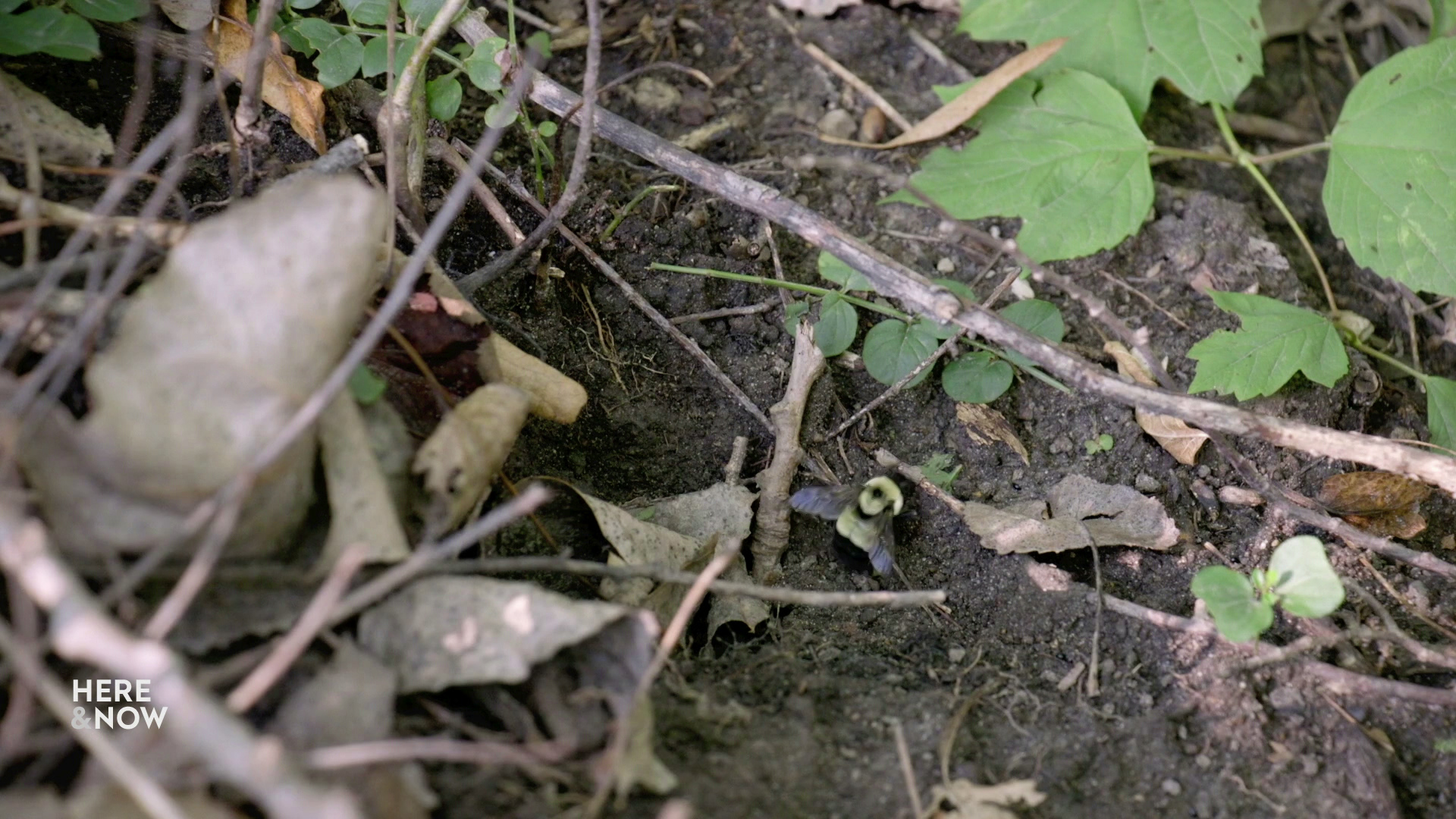
A rusty patched bumble bee is observed on Aug. 21, 2023 near its nest on the ground of the “pollinator prairie” maintained by AriensCo in Brillion. Three new nest of this endangered species were discovered in Wisconsin in the summer of 2023. (Credit: PBS Wisconsin)
State lawmakers are also working to protect native bee populations.
“I’m so passionate about pollinators and pollinator protection that I recently got a tattoo on my shoulder,” said state Rep. Lee Snodgrass, D-Appleton. “It is a rusty patched bumble bee.”
Snodgrass, who has twice introduced bills to help Wisconsin’s native pollinator populations, said Wisconsin is lagging behind other states.
“Unfortunately, Wisconsin is behind the 8-ball when it comes to this, and especially other states in the Midwest. Other states have already put things in place to protect pollinators,” she said.
- State Rep. Lee Snodgrass, D-Appleton, has introduced bills to the Wisconsin Legislature that would take steps to help protect native bees and provide funding for their conservation. (Credit: PBS Wisconsin)
- State Rep. Lee Snodgrass, D-Appleton, shows a tattoo of a rusty patched bumble bee on her shoulder. (Credit: PBS Wisconsin)
One of her bills would prohibit the DNR from using one particular pesticide.
“Neonicotinoids are a class of insecticides that are particularly harmful to pollinators. They really interfere with the neurological system of pollinators and bees in particular,” she said. “It makes it difficult for them to even find their way back to their hive.”
Snodgrass is also proposing specialized license plates to raise funding for pollinator habitats and mandating that state agencies use native plants that pollinators prefer.
She said it’s an environmental and economic issue.
“Without pollinators, Wisconsin really would not have an agriculture economy. Our crops are incredibly dependent on pollinators,” Snodgrass explained. “We have our apple producers, our honey producers, our cranberry producers — all of them would see a 70, 60, 50% decline without pollinators.”
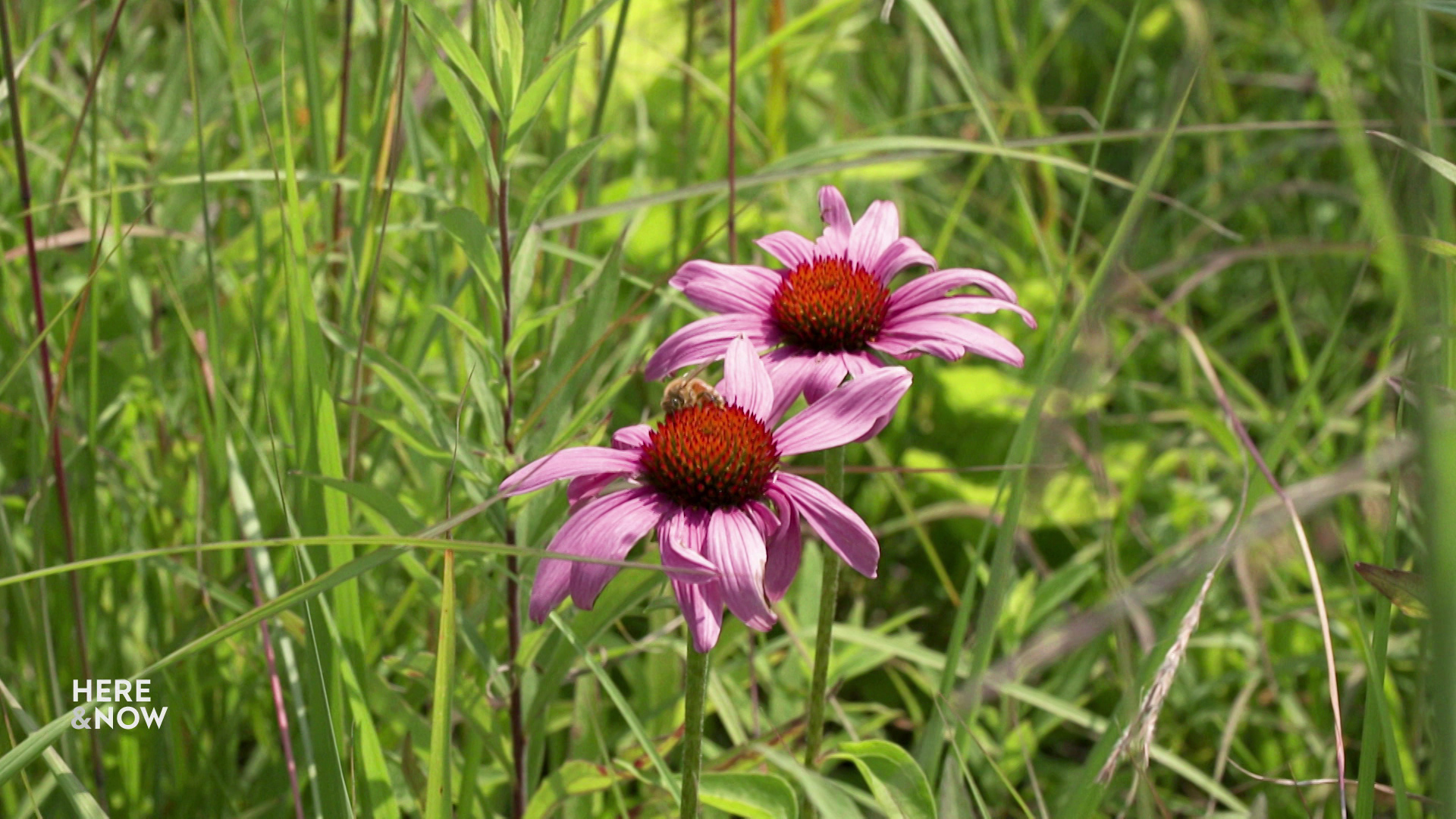
Purple coneflowers grow in the “pollinator prairie” established by AriensCo on land in Brillion on Aug. 21, 2023. This native plant species attracts and provides habitat for native bees in Wisconsin. (Credit: PBS Wisconsin)
Cardin of the Bumble Bee Brigade said individuals help the state’s native bee population survive and thrive in Wisconsin by planting perennials like the purple coneflower.
“Probably about 25% of bees are at some level of a threatened status right now. There’s been a lot of loss of bumble bees. I’m going to do what I can do to help and what I can do is I could plant native flowers in my yard, I can promote to my neighbors planting native flowers,” she said. “I think there is hope, and that’s something every single person can do to make things better for the bumble bee.”
 Passport
Passport




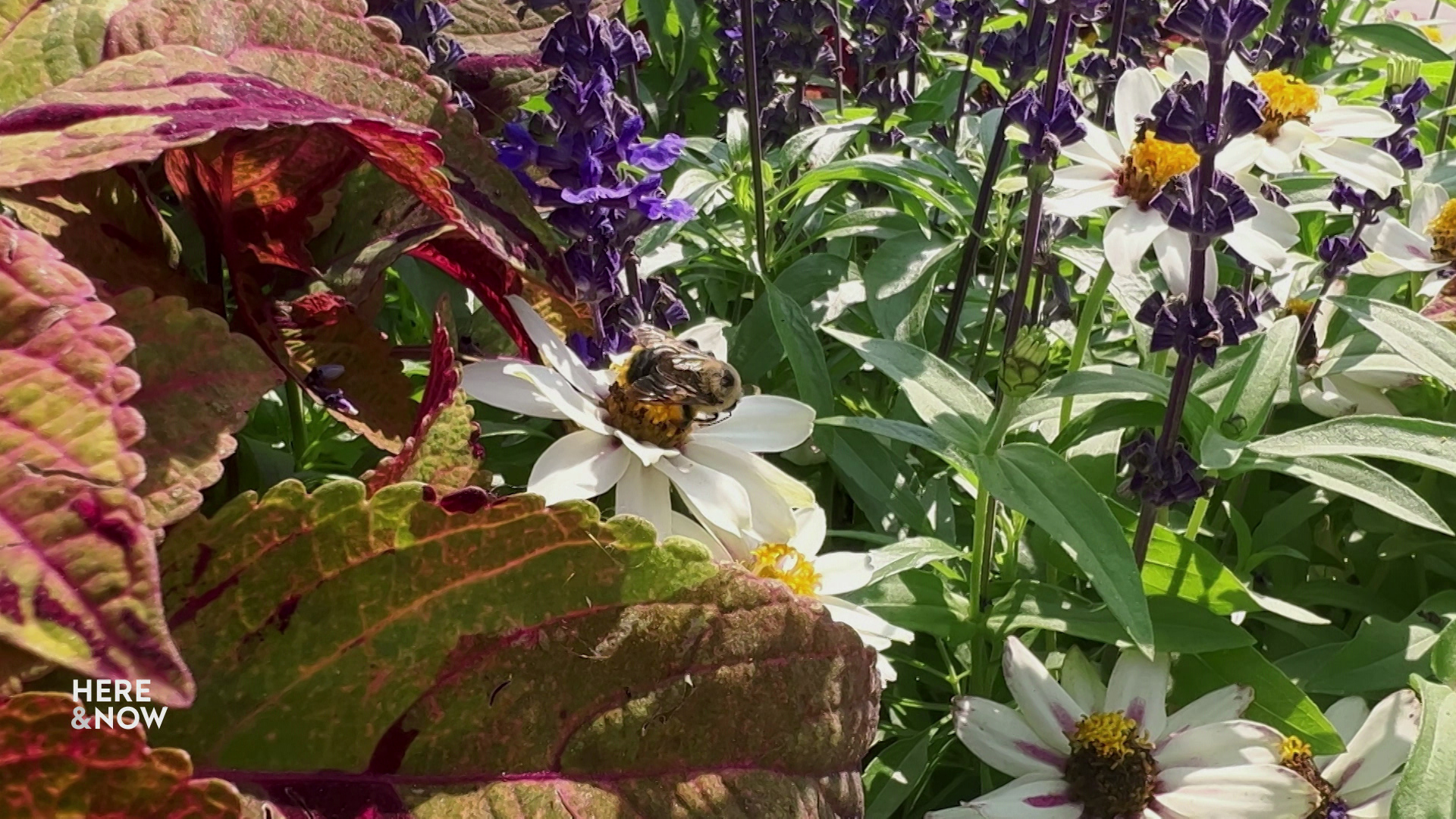
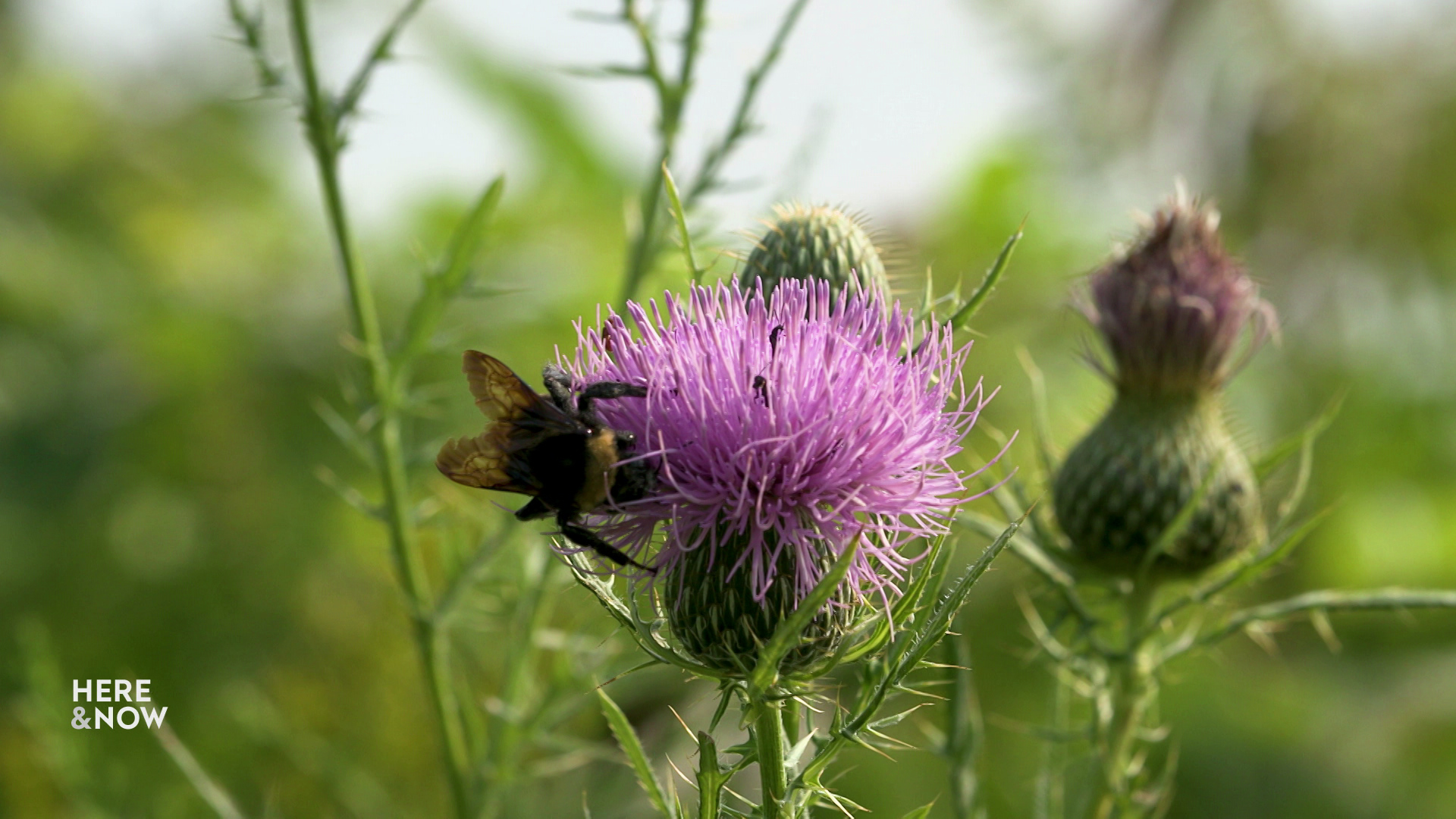
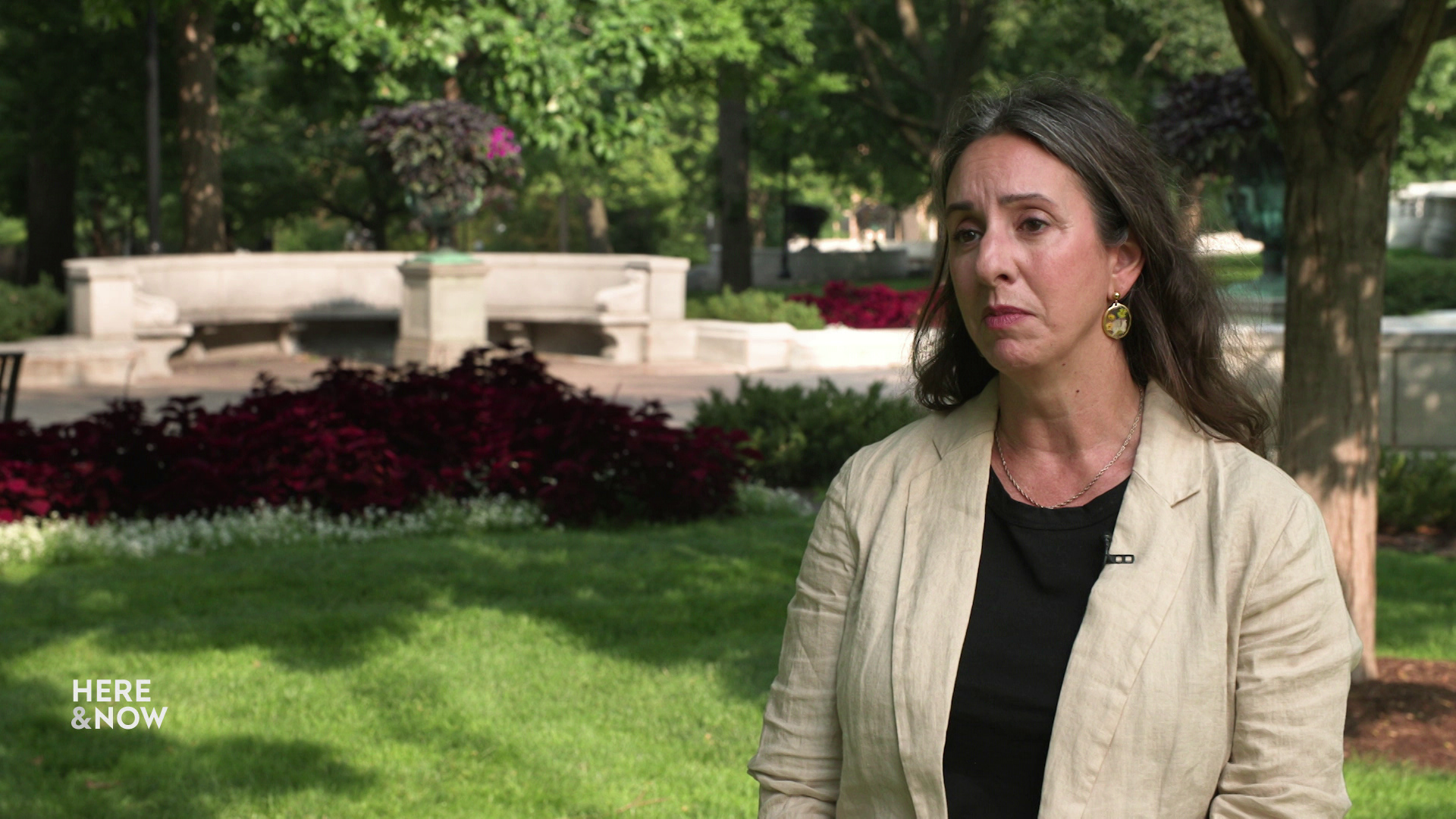
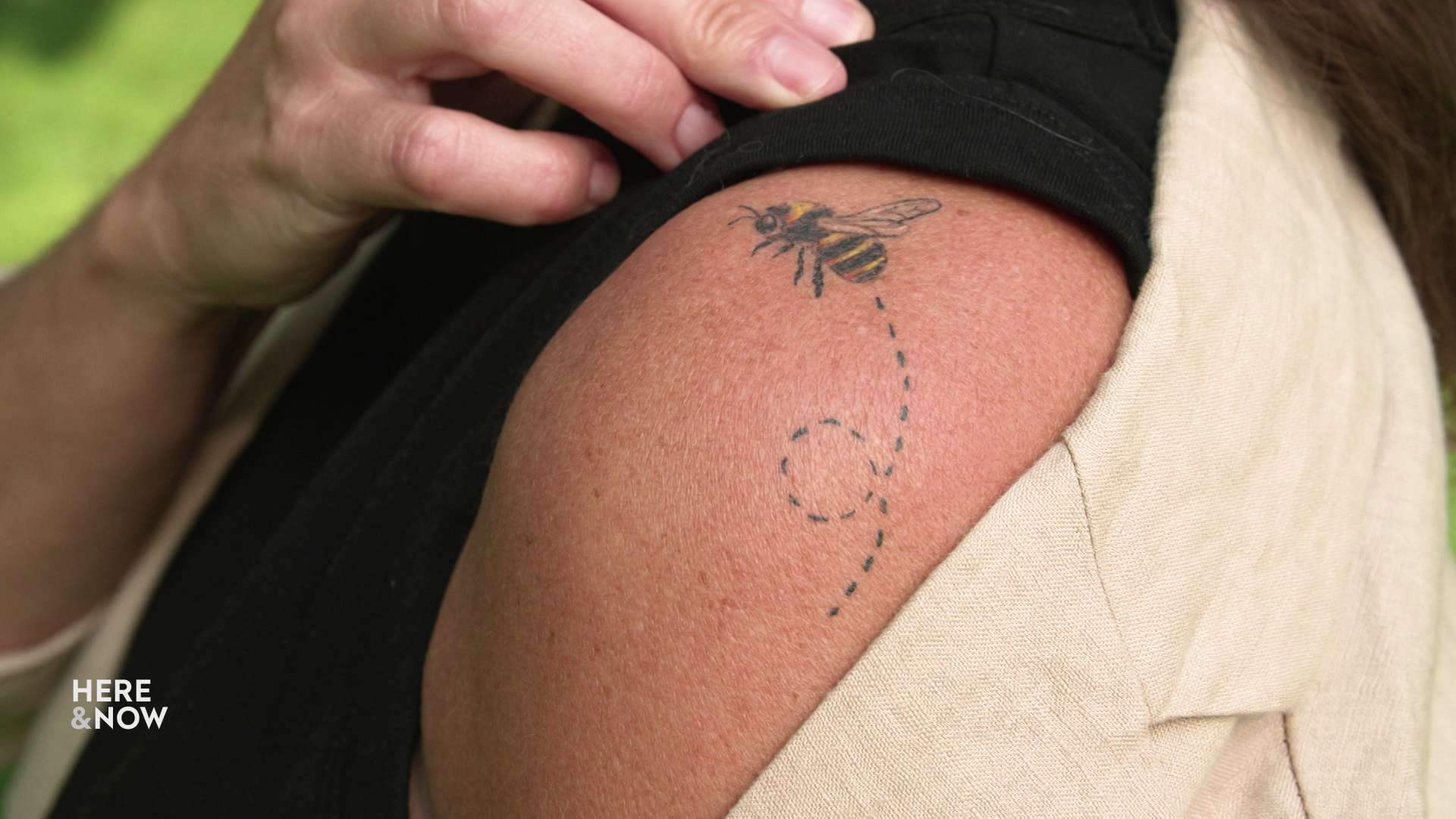
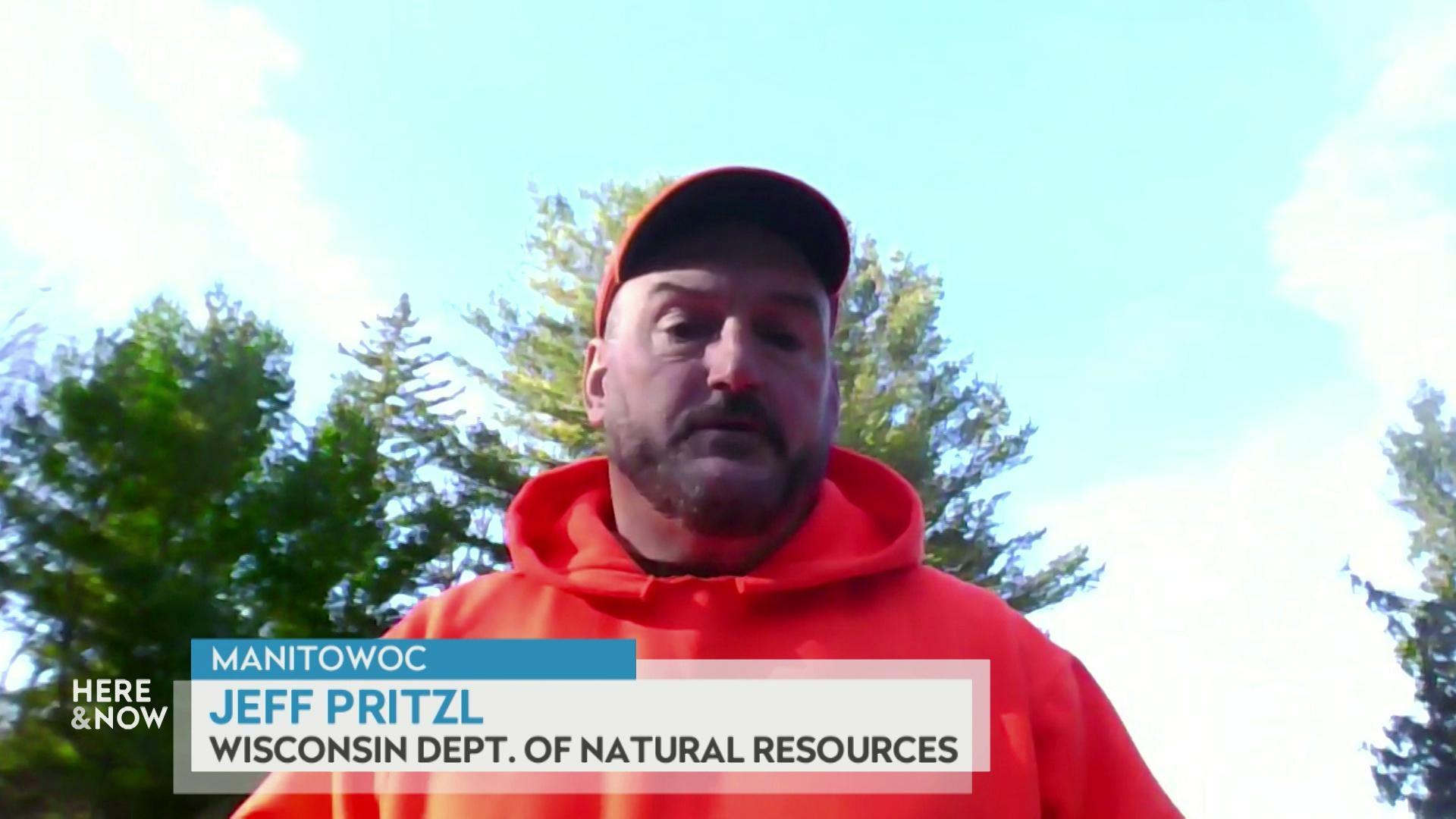
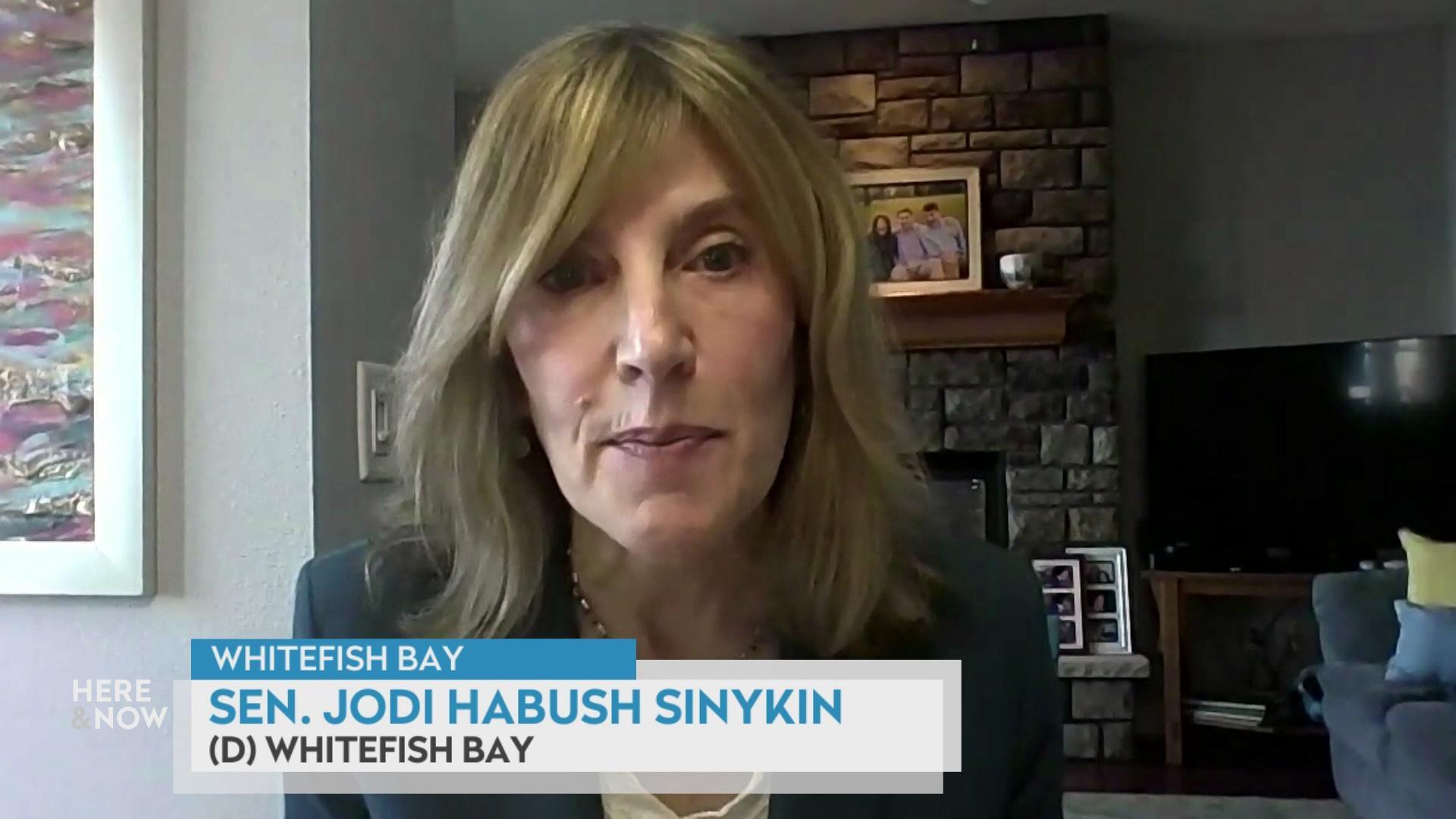

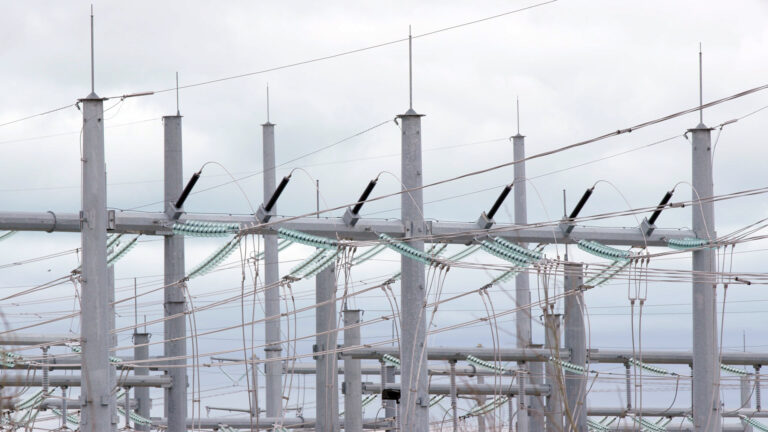
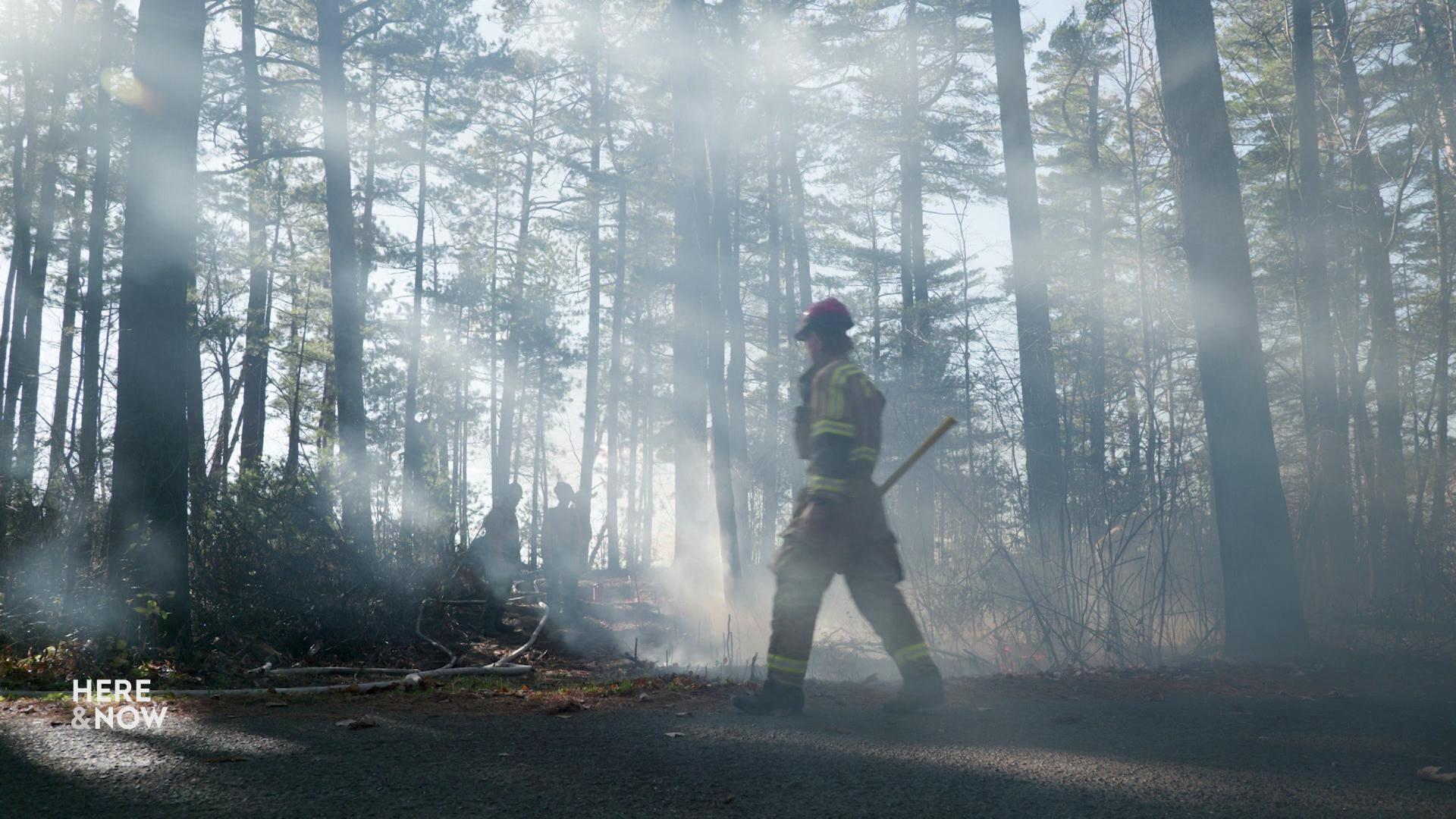
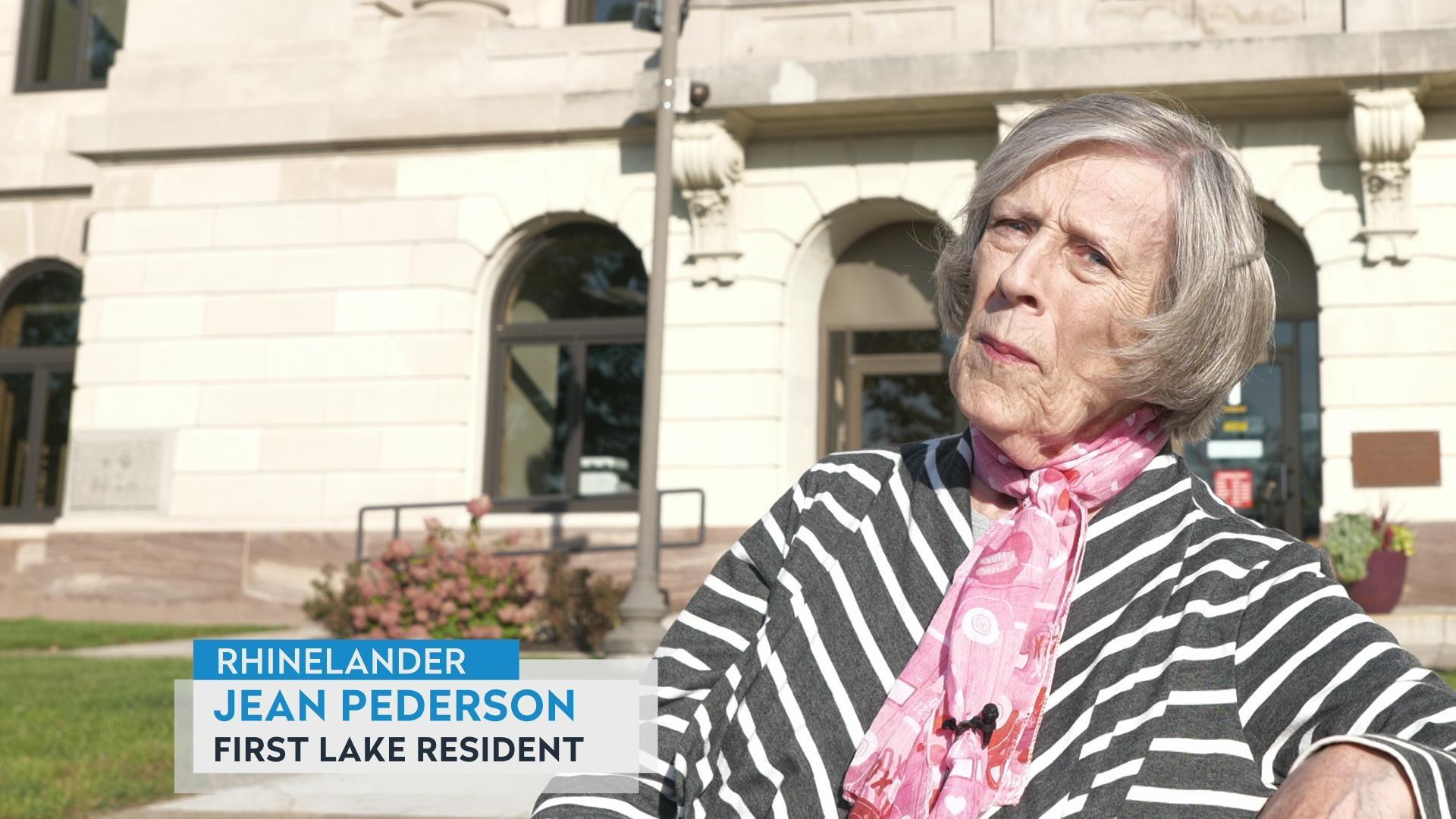

Follow Us